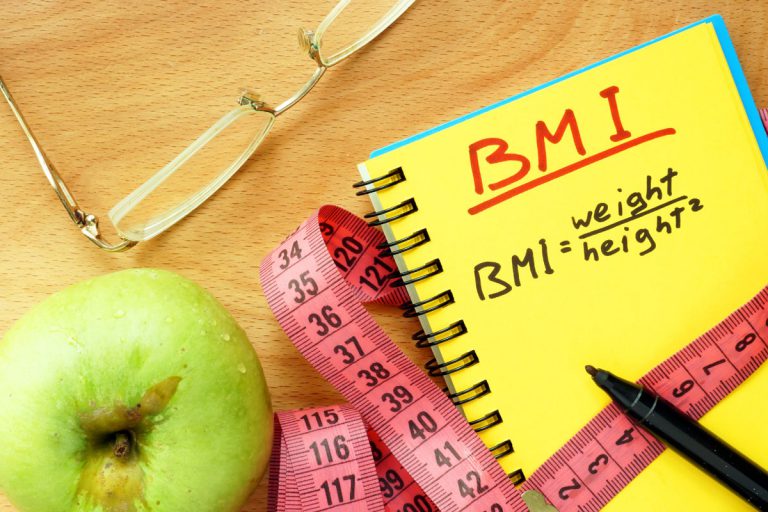As your Body Mass Index [BMI] increases, so does your risk of death. But is BMI the best tool to determine your health status?
Calculated from your weight and height, BMI provides a general gauge of body fatness. BMI is a correlation between an individual’s height and weight, but it does not distinguish between fat weight and muscle weight.
Figure your Body Mass Index using either your bioempedence scale, your body fat calipers or the following simple formula:
BMI=Weight in pounds x 703, divided by height in inches x height in inches
Or
BMI=[Weight x 703]/height2
For Example:
Weight in pounds = 150
Height in inches = 64
150 x 703 = 105,450
64 x 64 = 4096
105,450/4096 = 25.74
BMI = 25.74%
Your BMI number can fall into one of four adult categories:
Below 18.5 = Underweight
18.5 – 24.9+ = Normal
25.0 – 29.9 = Overweight
30.0 and above = Obese
As your BMI increases, so does your risk of death from many possible causes, such as ischemic heart disease, stroke and various types of cancers. Based upon a study published in the online March 2009 Lancet, a collaborative analysis of 57 studies found that BMI is a “reasonably good measure” of general adiposity – body fat.
Researchers reported the lowest mortality was in those with a BMI of 22.5 to 25 kg/m2. As BMI slightly increases, the mortality rate begins to skyrocket. each 5 kg/m2 higher BMI was associated with about 30% higher all-cause mortality (40% for vascular; 60–120% for diabetic, renal, and hepatic; 10% for neoplastic; and 20% for respiratory and for all other mortality). In other words, as BMI increased overall death rate increased.
Having an above normal range BMI can result in these health conditions:
- Hypertension
- Dyslipidemia
- Type-2 diabetes
- Coronary heart disease
- Gallbladder disease
- Stroke
- Sleep apnea
- Osteoarthritis
- Various cancers
People frequently state that muscle weighs more than fat. Its simply not true, a pound of muscle weighs exactly the same as a pound of fat. It just so happens that fat occupies nearly 18% more volume for the same pound weight, and muscle tends to adhere to tightly to skeletal structures, whereas fat drapes loosly. Because BMI fails to distinguish between fat and muscle, because it is weight based, a better way of looking at this was needed, hence a calculation of actual percentage fat by bioimpedance scale or skin calipers or more scientifically with DEXA scan.
Danger also lurks behind that expanding waistline: highly active, toxic abdominal fat heightens your disease risk. Check your waist girth with a tape measure, starting at the top of the hipbone. Measure at your greatest waist area, keeping the tape measure even, not pulling too tightly. A total of over 40 inches for men or over 35 inches for women means it’s high time to get serious about taking control of your health and future. The abdominal girth or waist measurement is a quick tool in determining your cardiac risk, it looks more at the volume of fat in the abdomen rather than the weight.
The waist to hip ratio is an important tool that helps you determine your overall health risk. People with more weight around their waist are at greater risk of lifestyle related diseases such as heart disease and diabetes than those with weight around their hips. It is a simple and useful measure of fat distribution.
Use a measuring tape to check the waist and hip measurements. - Measure your hip circumference at it’s widest part. - Measure your Waist Circumference at the belly button or just above it.
Simply take your waist measurement / your hip measurement; for example:
Waist to hip ratio:
Waist circumference / hip circumference
Waist: 32
Hip: 30
Ratio: 32/30 = 1.07
MALE FEMALE: Health risk based on ratio only
.95 or below .80 or below Low Risk
.96 – 1.0 .81-.85 Moderate Risk
1.0 + .85 + High Risk
Perhaps exercise tolerance and maximal exercise capacity by measuring METs may be the best indicator of body health and longevity, a functional test of exercise capacity rather than a weight test or a size test.
If you are truly interested in losing abdominal fat, check out ourmdHCG protocol for a guaranteed solution.

